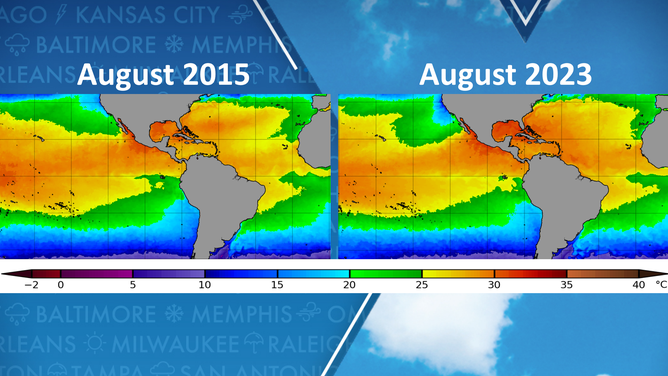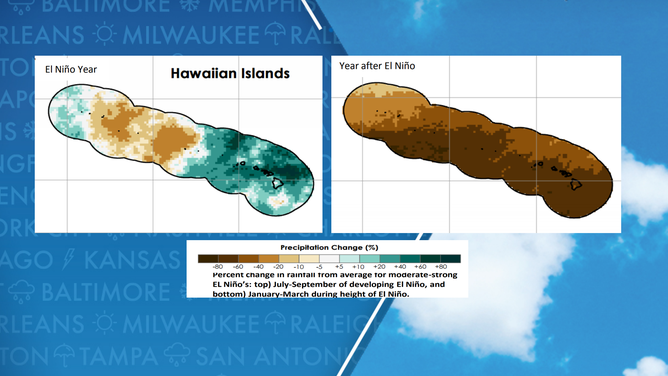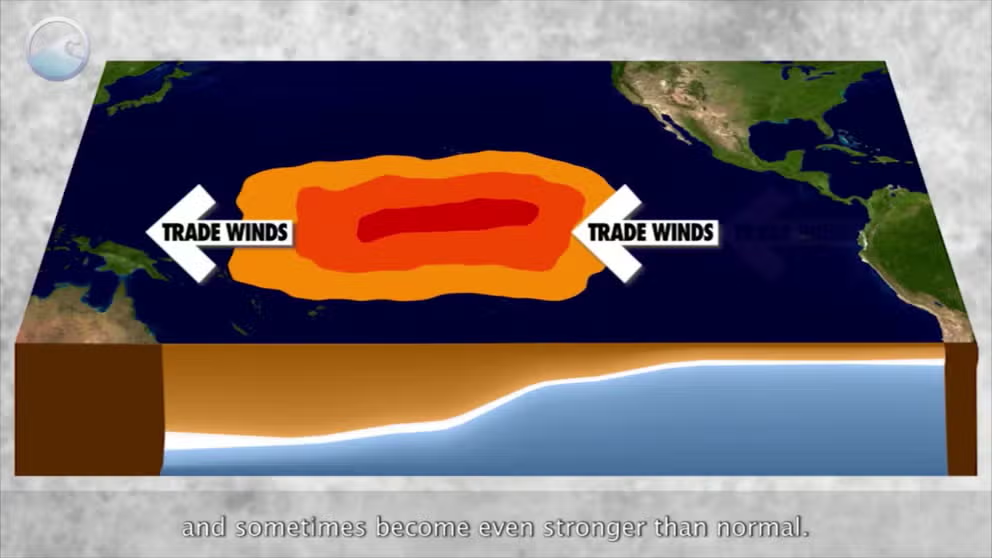Do El Nino events increase chances of a Hawaiian hurricane?
The status of the El Niño Southern Oscillation (ENSO) appears to play a role in how active the hurricane season is for Hawaii. More hurricanes have impacted the islands during El Nino or neutral events than during La Nina.
The meaning of El Nino and La Nina
The status of whether the world is being impacted by an El Nino or a La Nina is determined by water temperatures in the central and eastern Pacific. (NOAA)
A recurring climate pattern known as El Niño has been known to increase tropical cyclones in the Pacific, but if the ingredients align, these tropical entities can travel close to or over the Hawaiian Islands.
Since reliable record-keeping of cyclones started in the Pacific Ocean, 32 tropical storms or hurricanes have passed within 70 miles or less of Hawaii, with many occurring during El Niños or neutral periods.
Some of the cyclones have been billion-dollar disasters, such as Hurricane Iniki in 1992 and Hurricane Iwa in 1982, while others have resulted in just squally weather.
HURRICANE INKI 30 YEARS LATER: HOW A MONSTER STORM IN HAWAII IMPACTED FILMING OF JURASSIC PARK
NOAA forecasters warn not all El Niños are alike, and atmospheric winds and sea surface temperatures can vary in the eastern and central Pacific, leading to how conducive conditions are for cyclones to travel thousands of miles across the Pacific.
In 2015, sea surface temperatures averaged just shy of 80 degrees Fahrenheit, which was warm enough to allow several tropical cyclones to venture through the islands as named entities.
The opposite is pattern is true in 2023, where a cool pool of water sits between Hawaii and the Pacific’s main hurricane development region, likely acting as a buffer between a hurricane and the islands.

Water temperatures in Pacific Ocean
(FOX Weather)
Cooler water temperatures are known to disrupt cyclones because of the lack of warm, humid air needed for their continued survival.
Water temperatures for Hurricane Dora were warm enough for the cyclone to maintain intensity and even strengthen south of the islands, but its path was over 500 miles away, closer to the equator, where temperatures are perpetually warmer.
According to NOAA’s hurricane database, the impact rate of hurricanes on the islands is the lowest during La Niña events and substantially higher during what are considered to be either neutral or El Niño years.
DEATH TOLL FROM HAWAII FIRES EXPECTED TO CLIMB OVER 100 AS CADAVER DOGS SCOUR THROUGH ASHES
Other noted impacts from El Niño events on Hawaii’s climate
According to the NOAA, rainfall tends to be above average during an El Niño year, but there are important caveats.
The heaviest rainfall typically occurs in the first half of the year versus the fall and early winter, thanks to reduced trade winds.
Once an El Niño event ends, dry conditions usually dominate the islands, with significant droughts reported during the year after.
Neutral events that take place after the world exits an El Niño have been known to decrease water supplies, add increased stress on ecosystems and increase wildfire risks.

Hawaii precipitation
(NOAA)
WHAT ARE EL NINO AND LA NINE CLIMATE PATTERNS?
So far, there are no indications of when the current El Niño event will end, and climate models show the cycle lasting well into 2024.
NOAA has previously announced there is a greater than 95% chance that the El Niño will last through February 2024, and the odds that the weather pattern is still around through the spring were estimated to be greater than 80%.
The last significant El Niño event of 2014-2016 lasted around a year and a half before water temperatures in the eastern Pacific fell below needed thresholds.
